Full text
PDF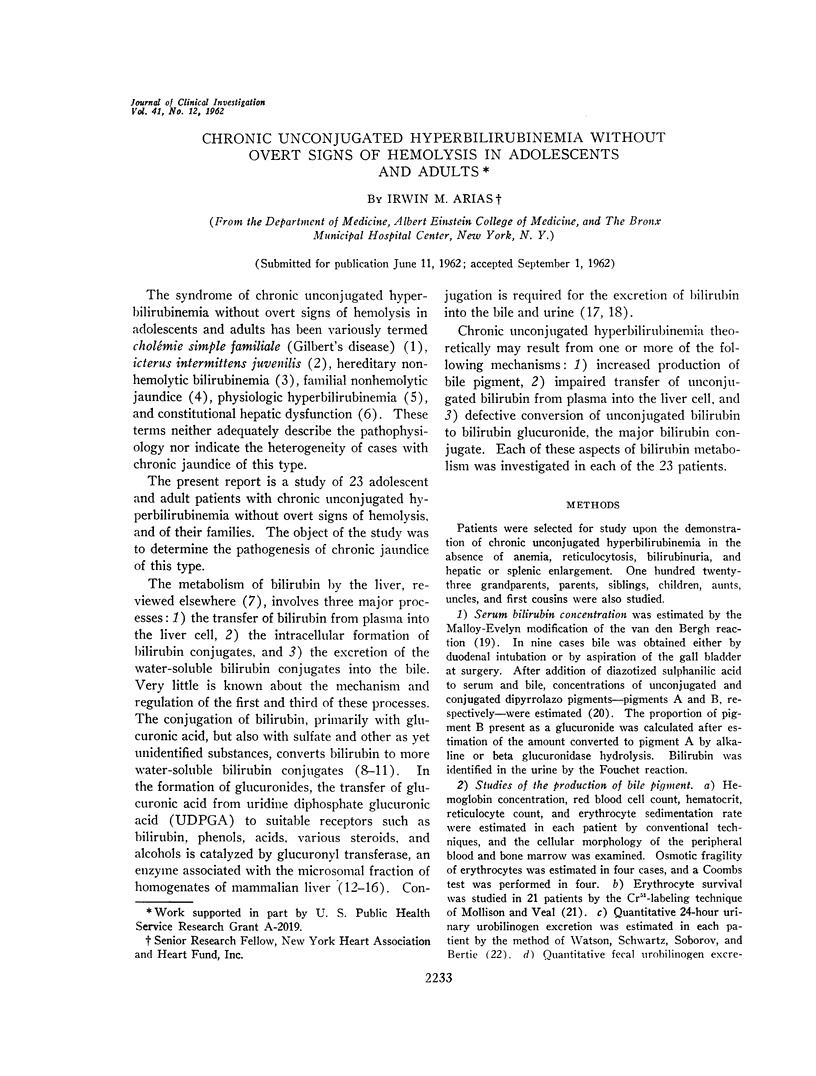
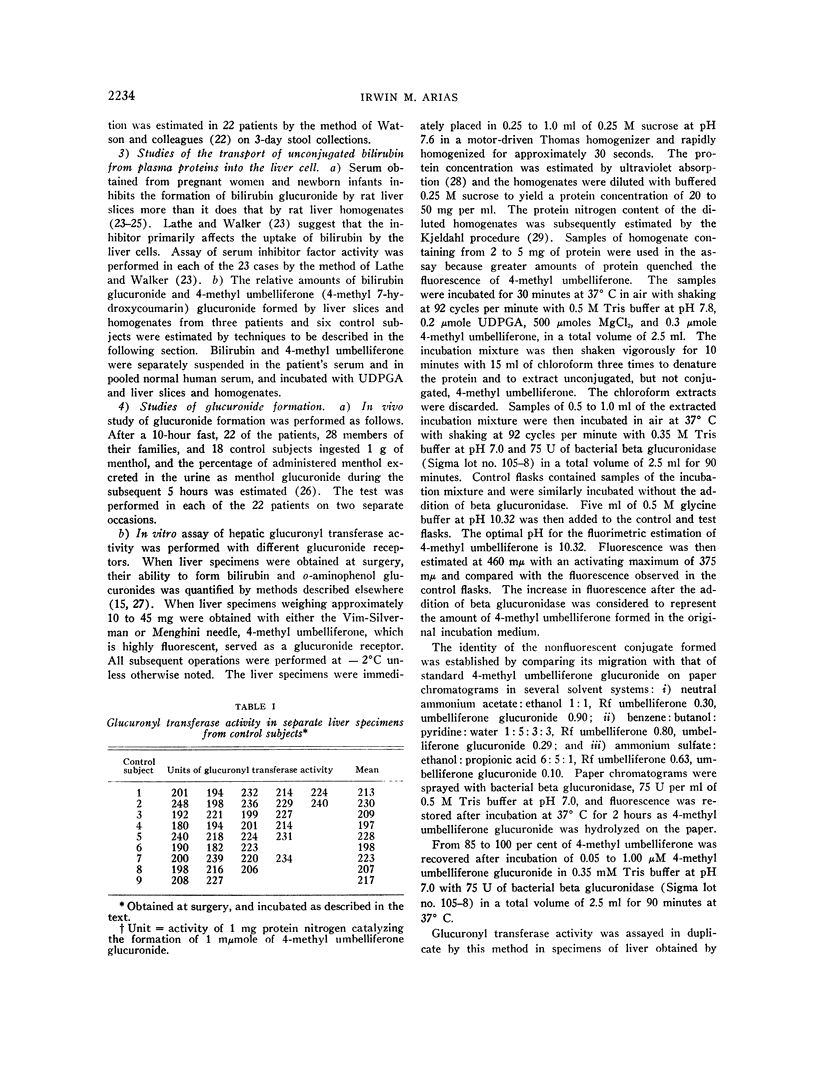
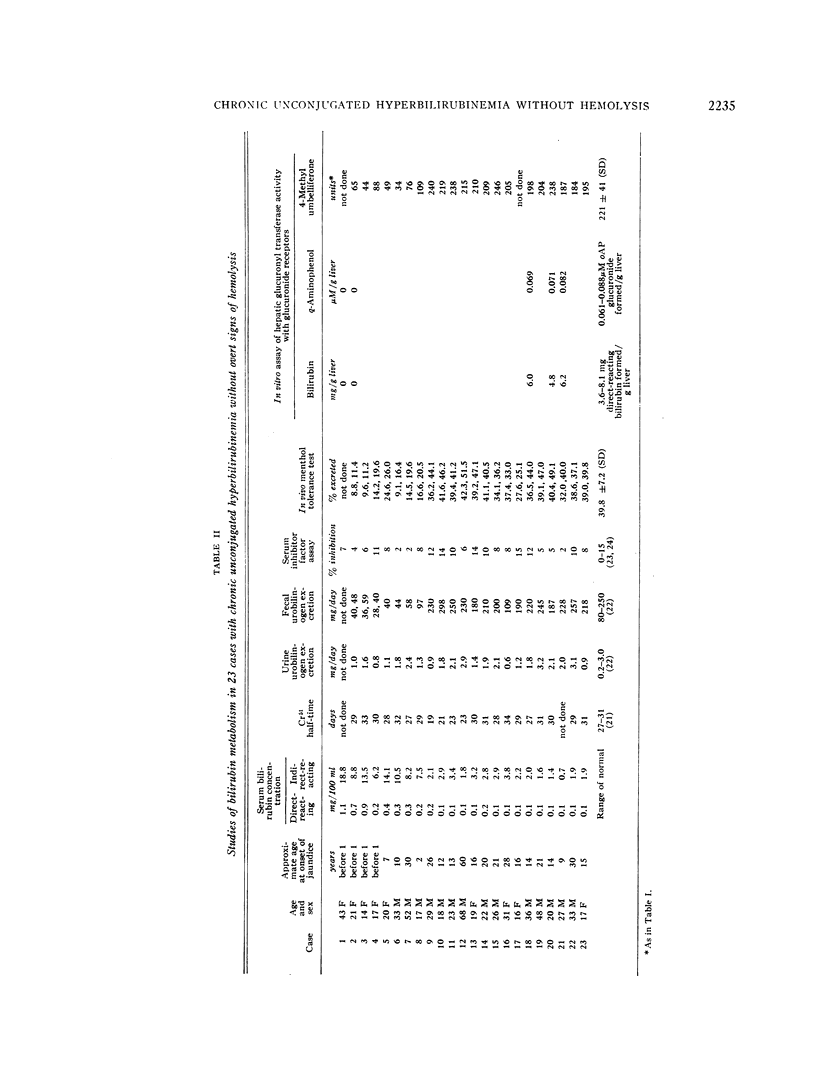
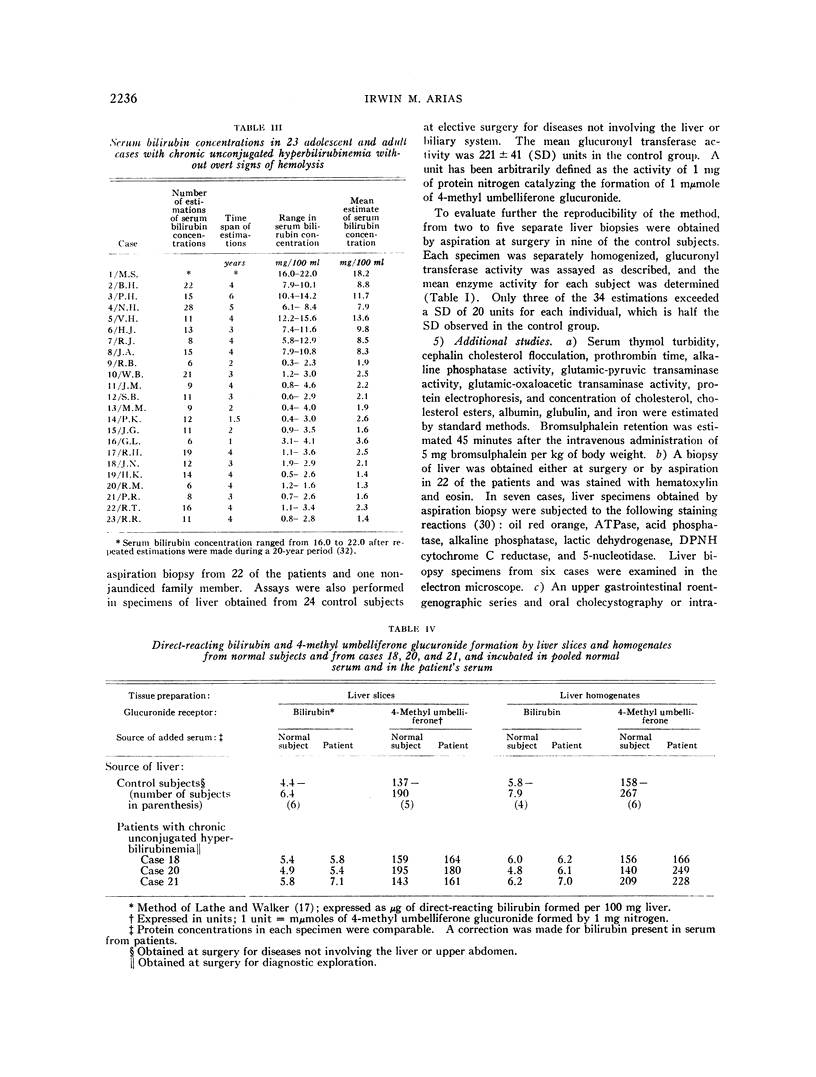
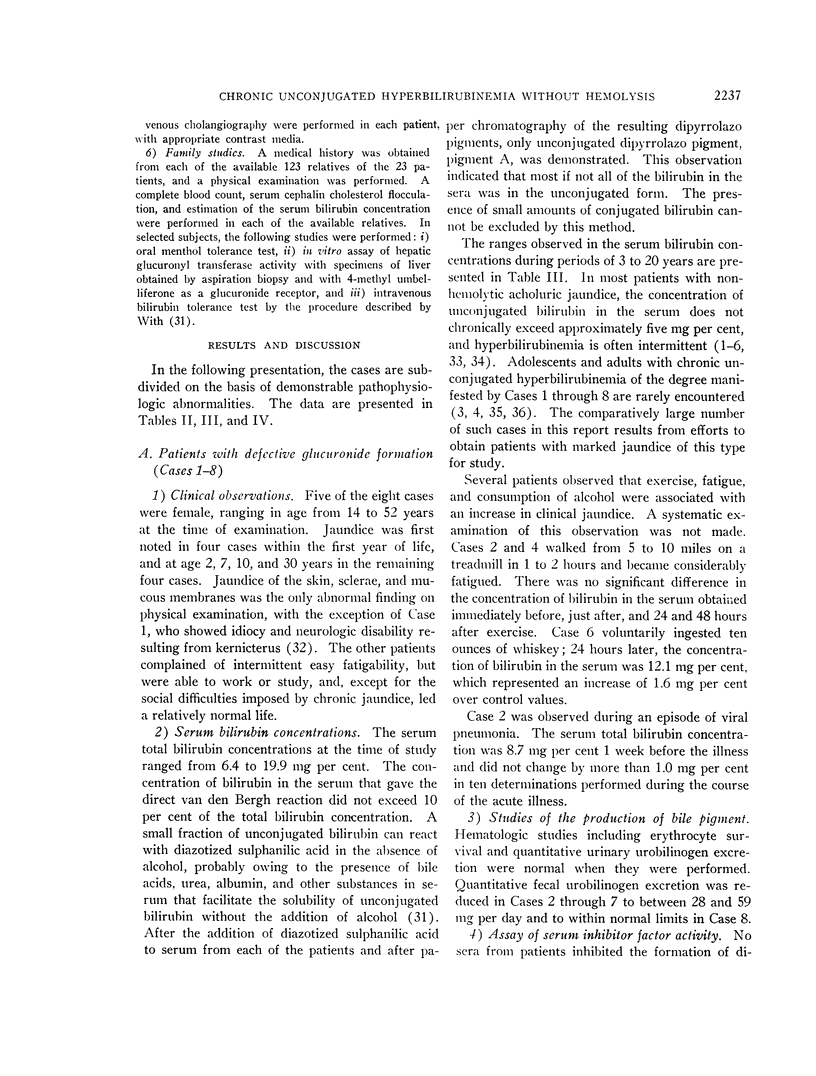
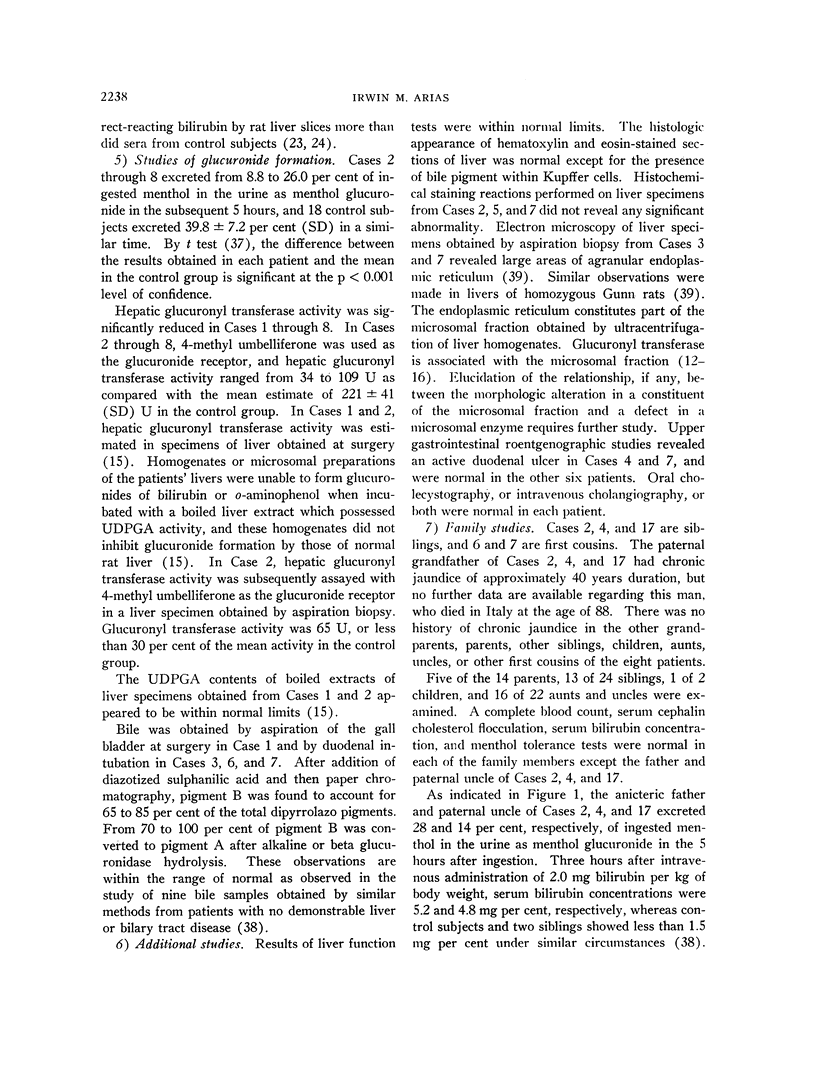
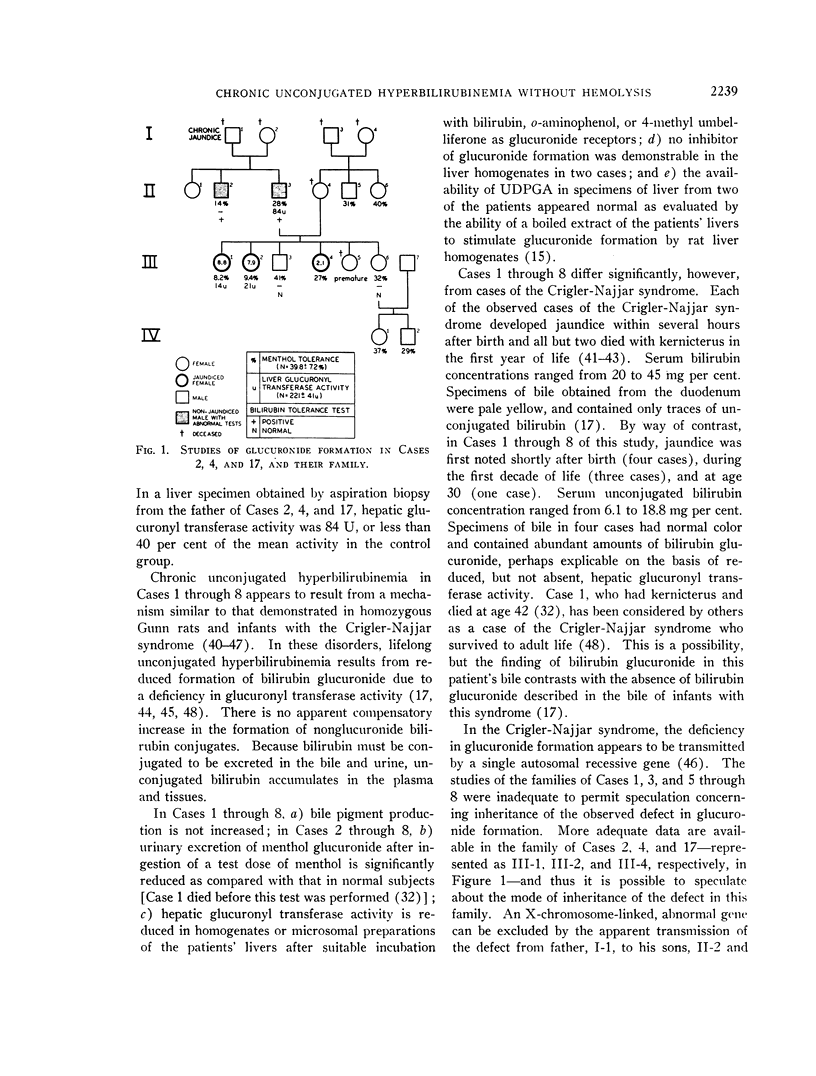
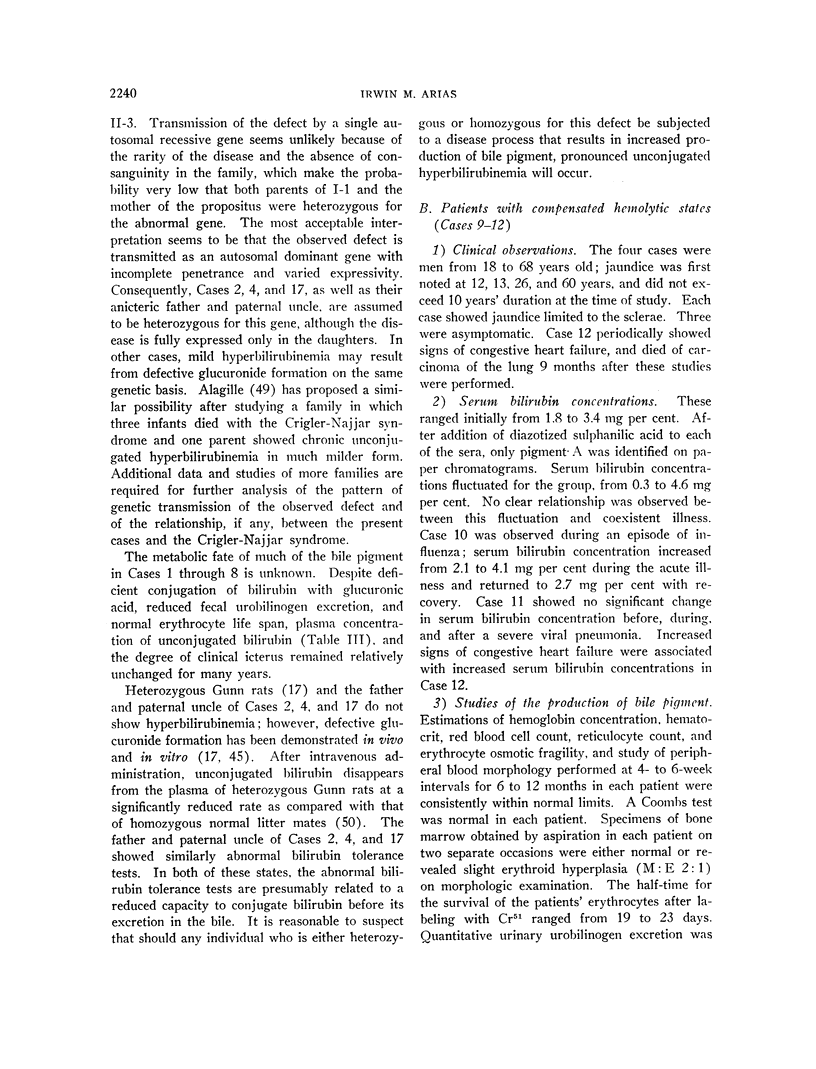
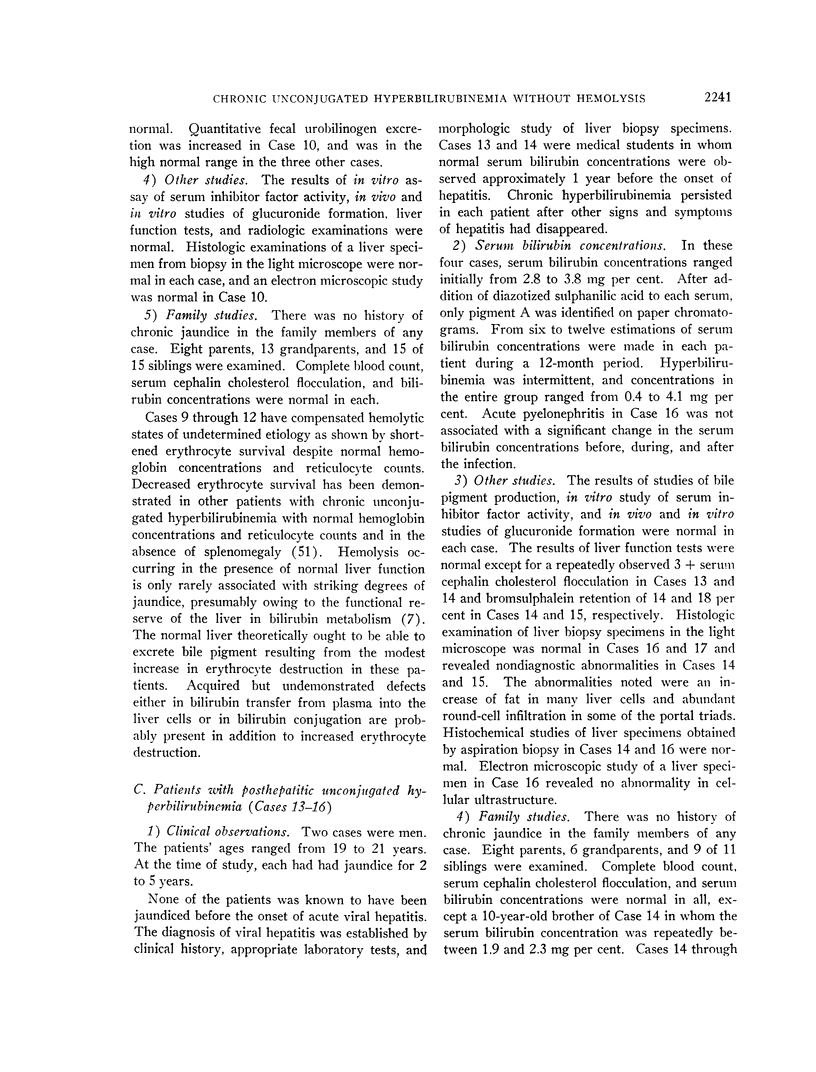
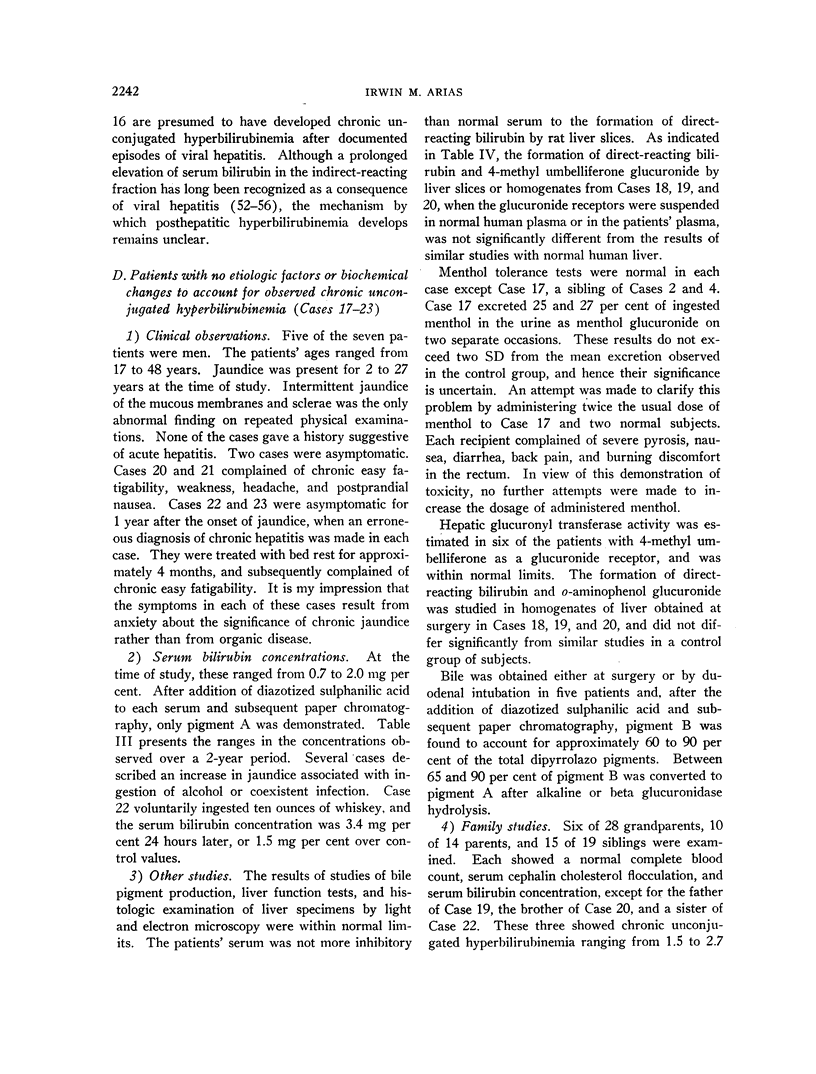
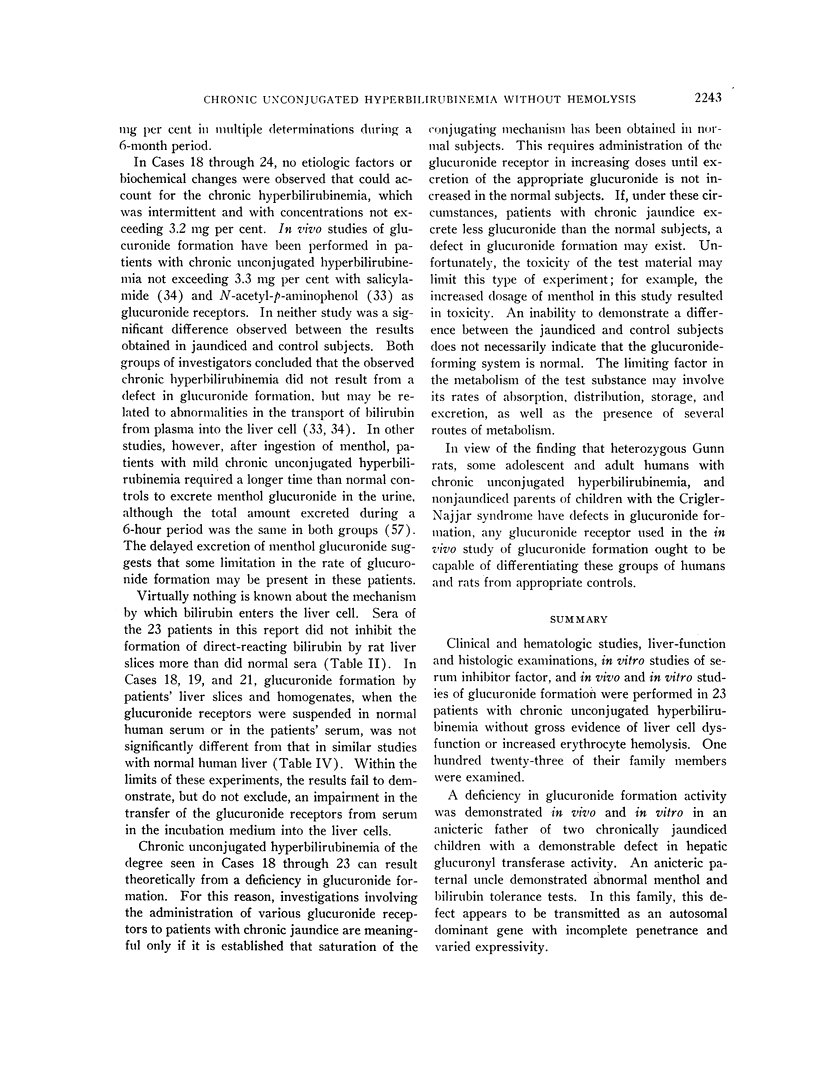
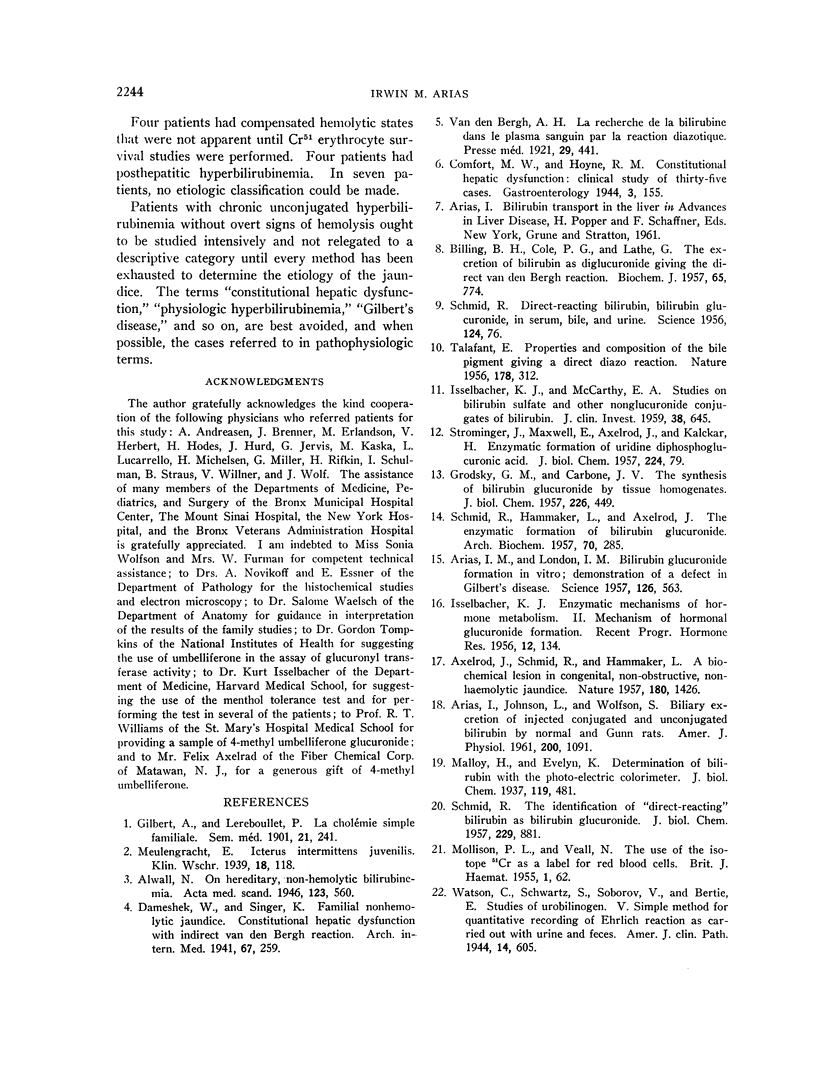
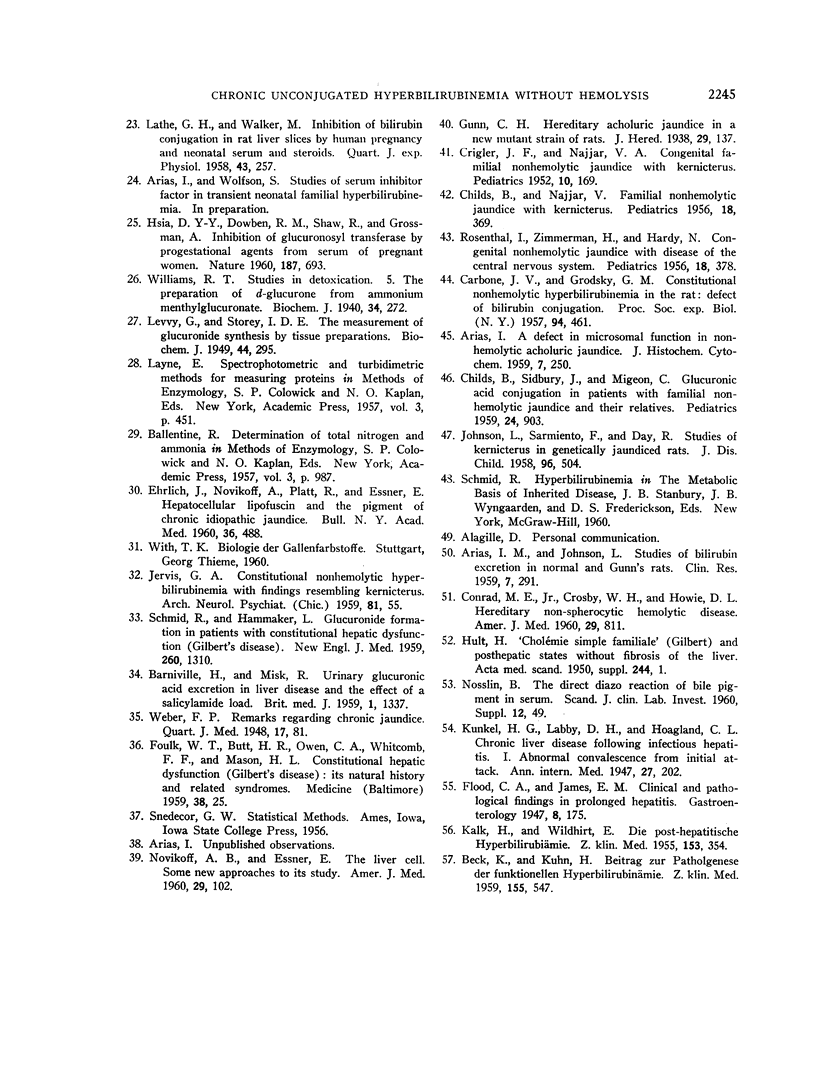
Selected References
These references are in PubMed. This may not be the complete list of references from this article.
- ARIAS I. M. A defect in microsomal function in nonhemolytic acholuric jaundice. J Histochem Cytochem. 1959 Jul;7(4):250–252. doi: 10.1177/7.4.250. [DOI] [PubMed] [Google Scholar]
- ARIAS I. M., JOHNSON L., WOLFSON S. Biliary excretion of injected conjugated and unconjugated bilirubin by normal and Gunn rats. Am J Physiol. 1961 May;200:1091–1094. doi: 10.1152/ajplegacy.1961.200.5.1091. [DOI] [PubMed] [Google Scholar]
- ARIAS I. M., LONDON I. M. Bilirubin glucuronide formation in vitro; demonstration of a defect in Gilbert's disease. Science. 1957 Sep 20;126(3273):563–564. doi: 10.1126/science.126.3273.563. [DOI] [PubMed] [Google Scholar]
- AXELROD J., KALCKAR H. M., MAXWELL E. S., STROMINGER J. L. Enzymatic formation of uridine diphosphoglucuronic acid. J Biol Chem. 1957 Jan;224(1):79–90. [PubMed] [Google Scholar]
- AXELROD J., SCHMID R., HAMMAKER L. A biochemical lesion in congenital, nonobstructive, non-haemolytic jaundice. Nature. 1957 Dec 21;180(4599):1426–1427. doi: 10.1038/1801426a0. [DOI] [PubMed] [Google Scholar]
- BECK K., KUHN H. A. Beitrag zur Pathogenese der funktionellen Hyperbilirubinämie. Z Klin Med. 1959;155(6):547–567. [PubMed] [Google Scholar]
- BILLING B. H., COLE P. G., LATHE G. H. The excretion of bilirubin as a diglucuronide giving the direct van den Bergh reaction. Biochem J. 1957 Apr;65(4):774–784. doi: 10.1042/bj0650774. [DOI] [PMC free article] [PubMed] [Google Scholar]
- CARBONE J. V., GRODSKY G. M. Constitutional nonhemolytic hyperbilirubinemia in the rat: defect of bilirubin conjugation. Proc Soc Exp Biol Med. 1957 Mar;94(3):461–463. doi: 10.3181/00379727-94-22979. [DOI] [PubMed] [Google Scholar]
- CHILDS B., NAJJAR V. A. Familial nonhemolytic jaundice with kernicterus; a report of two cases without neurologic damage. Pediatrics. 1956 Sep;18(3):369–377. [PubMed] [Google Scholar]
- CHILDS B., SIDBURY J. B., MIGEON C. J. Glucuronic acid conjugation by patients with familial nonhemolytic jaundice and their relatives. Pediatrics. 1959 May;23(5):903–913. [PubMed] [Google Scholar]
- CONRAD M. E., Jr, CROSBY W. H., HOWIE D. L. Hereditary nonspherocytic hemolytic disease. Am J Med. 1960 Nov;29:811–819. doi: 10.1016/0002-9343(60)90115-7. [DOI] [PubMed] [Google Scholar]
- CRIGLER J. F., Jr, NAJJAR V. A. Congenital familial nonhemolytic jaundice with kernicterus. Pediatrics. 1952 Aug;10(2):169–180. [PubMed] [Google Scholar]
- EHRLICH J. C., NOVIKOFF A. B., PLATT R., ESSNER E. Hepatocellular lipofuscin and the pigment of chronic idiopathic jaundice. Bull N Y Acad Med. 1960 Jul;36:488–491. [PMC free article] [PubMed] [Google Scholar]
- FOULK W. T., BUTT H. R., OWEN C. A., Jr, WHITCOMB F. F., Jr, MASON H. L. Constitutional hepatic dysfunction (Gilbert's disease): its natural history and related syndromes. Medicine (Baltimore) 1959 Feb;38(1):25–46. [PubMed] [Google Scholar]
- GRODSKY G. M., CARBONE J. V. The synthesis of bilirubin glucuronide by tissue homogenates. J Biol Chem. 1957 May;226(1):449–458. [PubMed] [Google Scholar]
- HARDY N., ROSENTHAL I. M., ZIMMERMAN H. J. Congenital nonhemolytic jaundice with disease of the central nervous system. Pediatrics. 1956 Sep;18(3):378–386. [PubMed] [Google Scholar]
- HSIA D. Y., DOWBEN R. M., SHAW R., GROSSMAN A. Inhibition of glucuronosyl transferase by progestational agents from serum of pregnant women. Nature. 1960 Aug 20;187:693–694. doi: 10.1038/187693a0. [DOI] [PubMed] [Google Scholar]
- ISSELBACHER K. J. Enzymatic mechanisms of hormone metabolism. II. Mechanism of hormonal glucuronide formation. Recent Prog Horm Res. 1956;12:134-46; discussion, 146-51. [PubMed] [Google Scholar]
- ISSELBACHER K. J., McCARTHY E. A. Studies on bilirubin sulfate and other nonglucuronide conjugates of bilirubin. J Clin Invest. 1959 Apr;38(4):645–651. doi: 10.1172/JCI103842. [DOI] [PMC free article] [PubMed] [Google Scholar]
- JERVIS G. A. Constitutional nonhemolytic hyperbilirubinemia with findings resembling kernicterus. AMA Arch Neurol Psychiatry. 1959 Jan;81(1):55–64. doi: 10.1001/archneurpsyc.1959.02340130075008. [DOI] [PubMed] [Google Scholar]
- KALK H., WILDHIRT E. Die posthepatitische Hyperbilirubinämie (der sog. erworbene hämolytische Ikterus nach Hepatitis). Z Klin Med. 1955;153(4):354–387. [PubMed] [Google Scholar]
- LATHE G. H., WALKER M. Inhibition of bilirubin conjugation in rat liver slices by human pregnancy and neonatal serum and steroids. Q J Exp Physiol Cogn Med Sci. 1958 Jul;43(3):257–265. doi: 10.1113/expphysiol.1958.sp001328. [DOI] [PubMed] [Google Scholar]
- Levvy G. A., Storey I. D. The measurement of glucuronide synthesis by tissue preparations. Biochem J. 1949;44(3):295–299. doi: 10.1042/bj0440295. [DOI] [PMC free article] [PubMed] [Google Scholar]
- MOLLISON P. L., VEALL N. The use of the isotope 51Cr as a label for red cells. Br J Haematol. 1955 Jan;1(1):62–74. doi: 10.1111/j.1365-2141.1955.tb05489.x. [DOI] [PubMed] [Google Scholar]
- NOVIKOFF A. B., ESSNER E. The liver cell. Some new approaches to its study. Am J Med. 1960 Jul;29:102–131. doi: 10.1016/0002-9343(60)90011-5. [DOI] [PubMed] [Google Scholar]
- SCHMID R. Direct-reacting bilirubin, bilirubin glucuronide, in serum, bile and urine. Science. 1956 Jul 13;124(3211):76–77. doi: 10.1126/science.124.3211.76. [DOI] [PubMed] [Google Scholar]
- SCHMID R., HAMMAKER L., AXELROD J. The enzymatic formation of bilirubin glucuronide. Arch Biochem Biophys. 1957 Jul;70(1):285–288. doi: 10.1016/0003-9861(57)90103-0. [DOI] [PubMed] [Google Scholar]
- SCHMID R., HAMMAKER L. Glucuronide formation in patients with constitutional hepatic dysfunction (Gilbert's disease). N Engl J Med. 1959 Jun 25;260(26):1310–1314. doi: 10.1056/NEJM195906252602603. [DOI] [PubMed] [Google Scholar]
- SCHMID R. The identification of direct-reacting bilirubin as bilirubin glucuronide. J Biol Chem. 1957 Dec;229(2):881–888. [PubMed] [Google Scholar]
- TALAFANT E. Properties and composition of the bile pigment giving a direct diazo reaction. Nature. 1956 Aug 11;178(4528):312–312. doi: 10.1038/178312a0. [DOI] [PubMed] [Google Scholar]
- TELLING the parents. Br Med J. 1959 May 23;1(5133):1339–1340. [PubMed] [Google Scholar]
- Williams R. T. Studies in detoxication: The preparation of d-glucurone from ammonium menthylglucuronate. Biochem J. 1940 Mar;34(3):272–275. doi: 10.1042/bj0340272. [DOI] [PMC free article] [PubMed] [Google Scholar]


